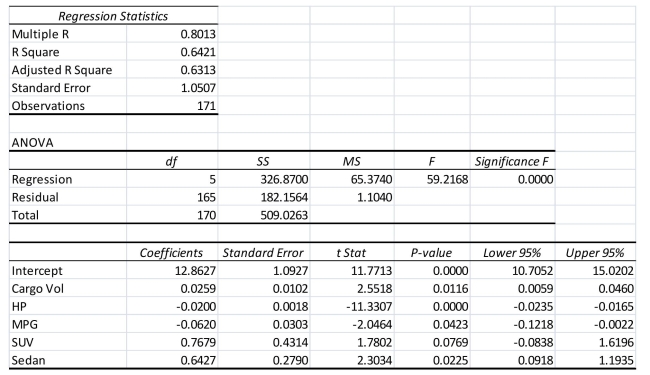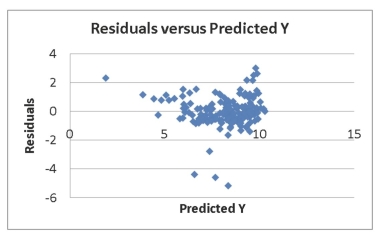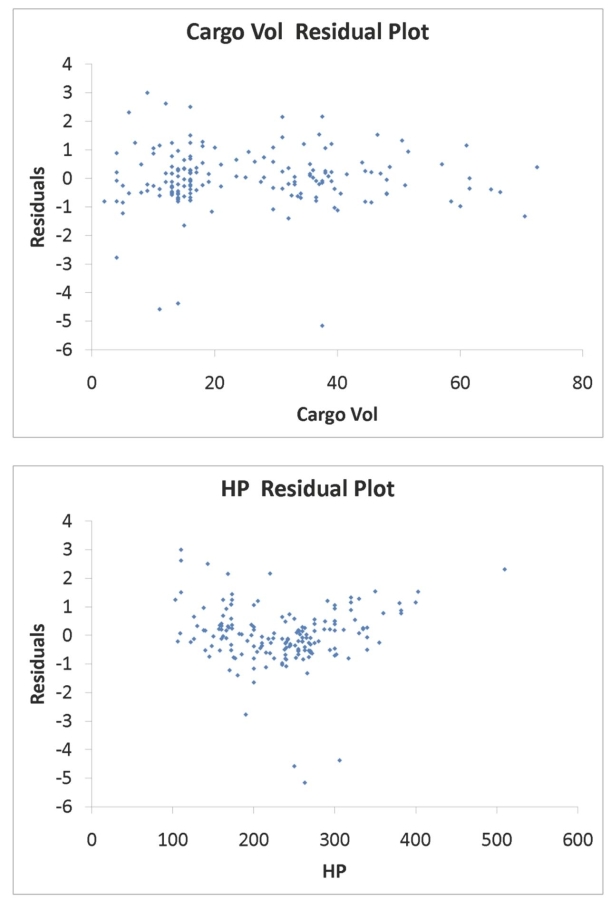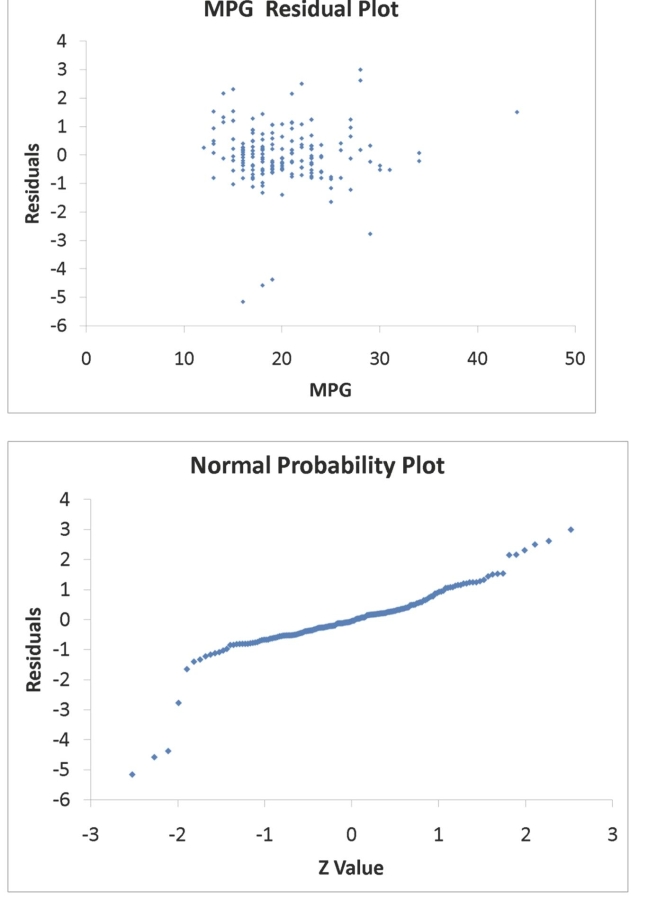SCENARIO 18-9 What are the factors that determine the acceleration time (in sec.)from 0 to 60 miles per hour of a car? Data on the following variables for 171 different vehicle models were collected: Accel Time: Acceleration time in sec. Cargo Vol: Cargo volume in cu.ft. HP: Horsepower MPG: Miles per gallon SUV: 1 if the vehicle model is an SUV with Coupe as the base when SUV and Sedan are both 0 Sedan: 1 if the vehicle model is a sedan with Coupe as the base when SUV and Sedan are both 0 The regression results using acceleration time as the dependent variable and the remaining variables as the independent variables are presented below. SCENARIO 18-9 cont.  The various residual plots are as shown below.
The various residual plots are as shown below.  SCENARIO 18-9 cont.
SCENARIO 18-9 cont.  SCENARIO 18-9 cont.
SCENARIO 18-9 cont.  The coefficient of partial determination
The coefficient of partial determination  of each of the 5 predictors are, respectively, 0.0380, 0.4376, 0.0248, 0.0188, and 0.0312. The coefficient of multiple determination for the regression model using each of the 5 variables
of each of the 5 predictors are, respectively, 0.0380, 0.4376, 0.0248, 0.0188, and 0.0312. The coefficient of multiple determination for the regression model using each of the 5 variables  as the dependent variable and all other X variables as independent variables (
as the dependent variable and all other X variables as independent variables (  )are, respectively, 0.7461, 0.5676, 0.6764, 0.8582, 0.6632.
)are, respectively, 0.7461, 0.5676, 0.6764, 0.8582, 0.6632.
-Referring to Scenario 18-9, ________ of the variation in Accel Time can be explained by
Definitions:
Continuing Desire
An ongoing longing or wish for someone or something, potentially driving motivation and actions.
Seething Cauldron
An intense situation filled with strong and possibly violent emotions, akin to a pot boiling over.
Unconscious Urges
Hidden, primal desires and impulses that influence behavior and thought processes, often without the individual's awareness.
Expression
The process of conveying thoughts, feelings, or ideas, whether through facial movements, words, artistic forms, or gestures.
Q2: The Cp index measures the potential of
Q17: Referring to Scenario 16-13, what is the
Q28: Poke-Yoke devices establish ways to clean and
Q87: Referring to Scenario 16-14, to obtain a
Q99: Bullet graphs that use color to represent
Q101: You can compute any of the numerical
Q115: Referring to Scenario 17-7, the "complete" method
Q152: Referring to Scenario 18-8, there is sufficient
Q164: Private colleges and universities rely on money
Q242: Referring to Scenario 18-11, what is the